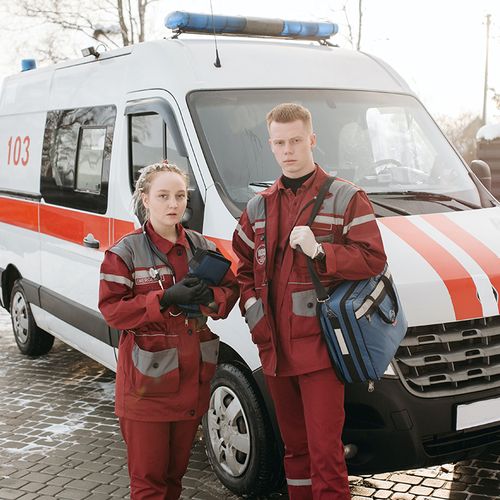Would you know what to do if a loved one lost consciousness and stopped breathing?
Each day, about 900 Americans die after suffering these classic signs of sudden cardiac arrest (an abrupt cessation of the heartbeat), usually resulting from a heart attack. About 80% of cardiac arrests occur at the victim's home.
Cardiopulmonary resuscitation (CPR) has long been used to try to keep a cardiac arrest victim's blood circulating until emergency medical help arrives. But CPR is difficult for nonprofessionals to master-and many laypeople administer it incorrectly.
Latest development: A study recently published in The Lancet found that when CPR was performed by bystanders, the use of continuous chest compressions alone resulted in better outcomes for cardiac arrest patients treated outside the hospital than the use of mouth-to-mouth resuscitation along with chest compressions.
The American Heart Association (AHA) says that more research is needed before general CPR guidelines are likely to change. However, the AHA does recommend that bystanders use compressions-only CPR if they are unable or unwilling to do mouth-to-mouth breathing.
Emergency physician Richard O'Brien, MD, discussed this and other new approaches to this potentially life-saving procedure…
Who Needs Help?
It should be assumed that anyone who suddenly loses consciousness and stops breathing requires immediate assistance. What to do…
1. Call for help. Ask someone to call 911 immediately. Do it yourself, if no one is available.
2. Determine whether the victim is unresponsive. Gently nudge and/or talk to the victim to see whether he/she is unconscious, rather than intoxicated or asleep.
3. Check breathing. Put your hand on the person's chest to feel for breathing movements... or put your ear close to the victim's nose and mouth and listen for breathing. Spend five to 10 seconds checking for normal breathing in an adult or for the presence or absence of breathing in an infant or child. (Gasping breaths that can occur in adults are uncommon in infants and children) If an adult is breathing normally or a child is breathing at all, do not perform CPR-wait for help to arrive. Otherwise, continue following these steps.
4. Ask for a portable defibrillator. If you're in a public place—an airport, supermarket, etc.yell that you need a defibrillator. When applied to the victim's chest, this device automatically analyzes the heart's rhythm (electrical activity), determines if an electric shock is needed and delivers the appropriate jolts. If a defibrillator shock is given within five minutes of cardiac arrest, the average survival rate is better than that offered by CPR. If a defibrillator is not immediately available, begin chest compressions.
Do Not Check The Pulse
Until recently, first-aid instructors taught would-be rescuers to check for a pulse before starting CPR
New guideline: The AHA now discourages checking for a pulse in an unconscious victim. That's largely because untrained bystanders come to an incorrect conclusion when checking for a pulse in about 35% of cases.
Giving Chest Compressions
If the victim is age nine or older, put the heel of one of your hands in the center of the person's chest between the nipples (at the "nipple line")...place your other hand on top...and push down one-and-a-half inches to two inches.
For a young child (ages one to eight), use one or both hands and press down at the nipple line about one-third to one-half the depth of the chest.
For infants, use two fingers and press on the breastbone just below the nipple line, one-third to one-half the chest depth.
Important: Allow the chest to completely recoil between compressions. Pressing down pushes blood out of the heart. During the recoil, the heart sucks in blood. Victims need about 100 chest compressions per minute.
Remember: When chest compressions are given, the goal is not to "restart the victim's heart, but to improve his chances of survival until medical personnel can provide advanced life support, including defibrillation and intravenous drugs (such as epinephrine).
Rescue Breathing
Before starting mouth-to-mouth resuscitation, tilt the victim's head back slightly and lift the chin toward your face. Take a normal breath before giving a rescue breath, which should last up to one second and make the victim's chest rise.
New guideline: After giving two rescue breaths, immediately begin chest compressions, using a ratio of 30 chest compressions for every two ventilations (rescue breaths).
To view a video of these basic steps, go to http://depts.washington.edu/learncpr/index.html, the Web site of the University of Washington School of Medicine.
